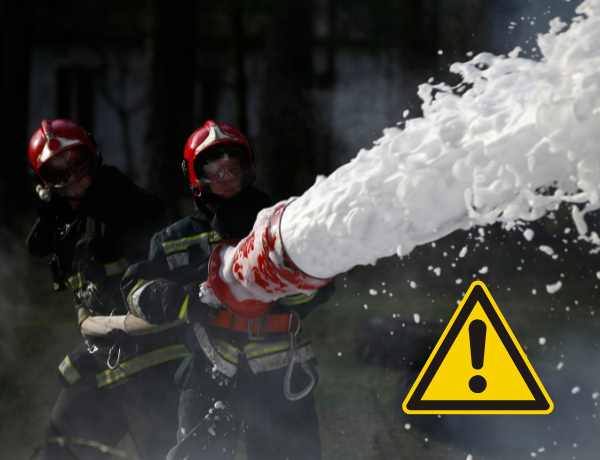Per- and polyfluoroalkyl substances (PFAS) are a group of man-made chemicals that have been used in a variety of industries around the globe since the 1940s. They're known for their resistance to heat, water, and oil, earning them the nickname 'forever chemicals' due to their persistent nature in the environment and in the human body. Recent years have seen a surge in concern over the impact of PFAS on health and the environment. One area of concern is the military's use of PFAS, particularly in firefighting foam, leading to numerous PFAS military lawsuits.
The military has extensively used aqueous film-forming foam (AFFF), a type of firefighting foam that contains PFAS, for decades. It's particularly effective at suppressing petroleum-based fires, common in aircraft accidents. Unfortunately, the use and improper disposal of this foam have resulted in PFAS contamination in the surrounding soil and water supplies of military bases, impacting both military personnel and local communities.
The Department of Defense (DoD) had identified hundreds of current or former military installations with known or suspected releases of PFAS, primarily due to the use of aqueous film-forming foam (AFFF) in firefighting training and response. The Environmental Working Group (EWG) maintains a map of known PFAS contamination sites, including military bases, in the United States.

Eglin AFB has reported high levels of PFAS contamination in groundwater.
This National Guard training center has reported PFAS contamination in nearby water supplies.
PFAS contamination has been reported in groundwater and nearby wells.
This former Air Force base is now a Superfund site with known PFAS contamination.
The base has reported PFAS contamination in groundwater.
The base has reported high levels of PFAS contamination in groundwater and nearby water supplies.
Studies have associated PFAS exposure with several health issues, including kidney and testicular cancer, thyroid disease, liver damage, and developmental issues. These potential risks have prompted affected military personnel and nearby residents to seek legal recourse.
A growing number of lawsuits have been filed against PFAS manufacturers and the Department of Defense (DoD). The plaintiffs generally claim that they were unaware of the risks posed by PFAS and that manufacturers and the DoD failed to adequately handle or disclose information about these risks. Here are some notable PFAS military lawsuits that have been filed:
In this lawsuit, filed in 2019, the Water Works Board of the City of Montgomery, Alabama, sued several chemical companies, including:
alleging that they were responsible for contaminating the city's water supply with PFAS chemicals originating from Maxwell-Gunter Air Force Base.
The Italian government and several municipalities in the Veneto region, including Vicenza and Treviso, have filed a lawsuit against the U.S. military seeking compensation for damages caused by PFAS contamination from military bases, particularly from the use of firefighting foams. The lawsuit alleges that the contamination has caused environmental damage and health risks to local residents.
In 2019, a group of residents living near the U.S. Air Force Academy in Colorado Springs, Colorado, filed a lawsuit against the Air Force, claiming that their drinking water was contaminated with PFAS chemicals from the base. The lawsuit seeks compensation for health monitoring and medical costs, as well as damages for diminished property values.
Residents of Oscoda, Michigan, filed a class-action lawsuit in 2017 against the Michigan National Guard and the U.S. Air Force, alleging that PFAS chemicals from the former Wurtsmith Air Force Base have contaminated the local groundwater, causing health problems and property damage.
In 2017, residents of Hoosick Falls, New York, filed a lawsuit against Saint-Gobain Performance Plastics and Honeywell International, alleging that the companies' operations at a local manufacturing facility led to PFAS contamination of the village's water supply. The contamination was linked to the use of firefighting foam containing PFAS.
These are just a few examples of PFAS military lawsuits, and there may be others in various stages of litigation. It's important to note that the status and outcomes of these lawsuits may change over time, and it's advisable to consult legal sources or news outlets for the most up-to-date information on specific cases.
These lawsuits can help affected individuals receive compensation for medical expenses, pain and suffering, and other damages. They also increase public awareness of PFAS risks and can pressure manufacturers and the government to take more decisive action to regulate and clean up PFAS.
While these lawsuits play out, it's crucial to continue pushing for comprehensive PFAS regulations and cleanup efforts. The National Defense Authorization Act (NDAA) for Fiscal Year 2020 included several provisions to reduce the DoD's use of PFAS and increase monitoring and mitigation efforts. However, there is still a long way to go to fully address the issue.
PFAS contamination is an emerging issue that requires urgent attention. The military-related lawsuits represent a significant step in holding responsible parties accountable and bringing justice to those affected. However, it's just one piece of the broader puzzle in dealing with 'forever chemicals.' Preventing further contamination and finding effective ways to clean up existing pollution must be a high priority for protecting both our health and the environment.
If you have been exposed to PFAS and injured, contact us to learn about your case.